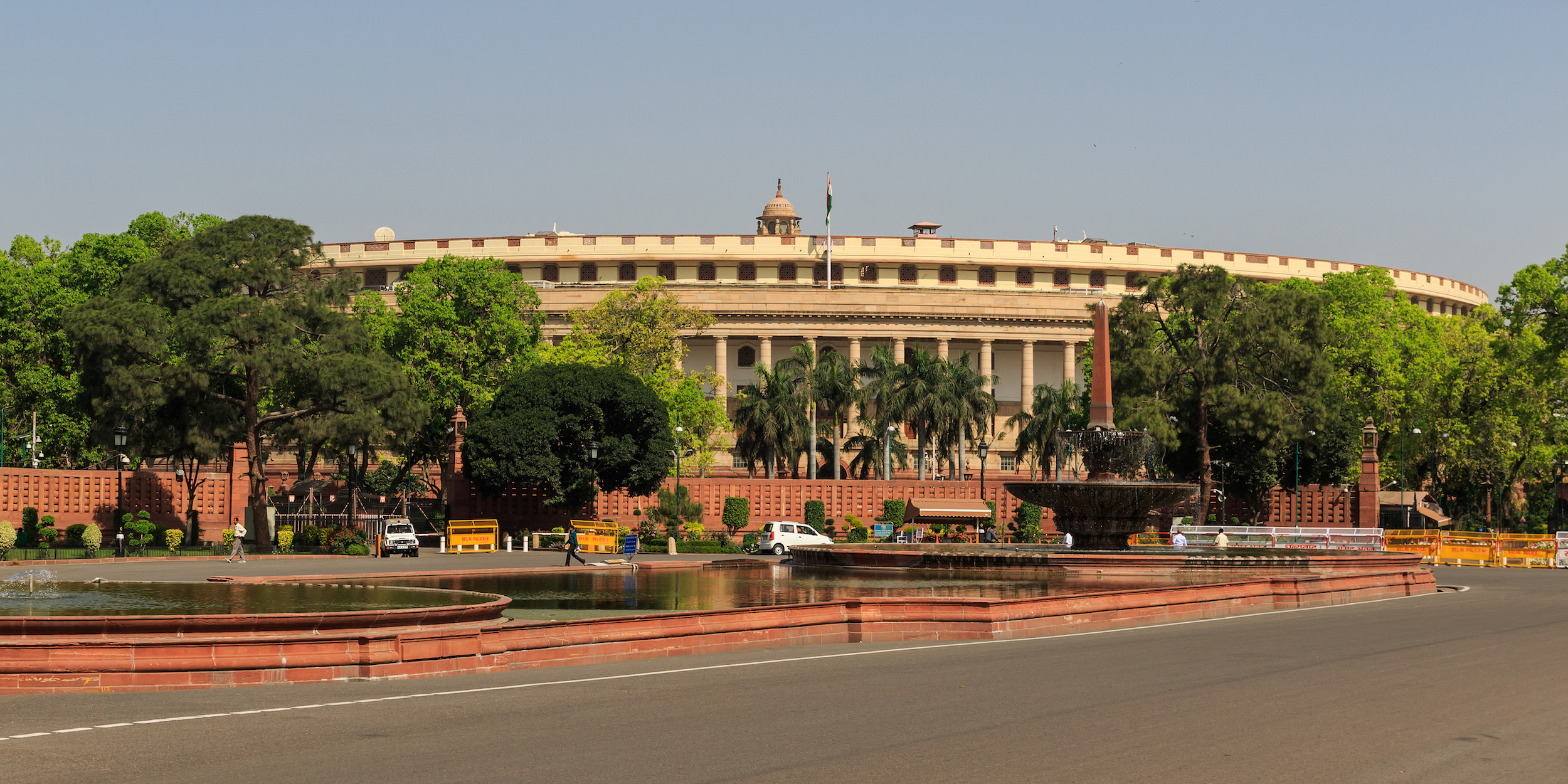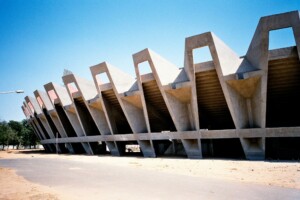The Supreme Court of India has permitted work to proceed on an expansive—and to many, problematically expensive at an estimated $2.7 billion—overhaul of the country’s core governmental complex in the capital of New Delhi.
The massive project includes several major elements with the most notable of them being a new parliamentary building to be built by engineering firm Tata Projects that will boast a distinctive triangular form and be situated directly in front of the existing, colonial-era Sansad Bhavan (Parliament House). That 1927 building, with its famously circular perimeter designed by English architects Edwin Lutyens and Herbert Baker, will eventually be converted into a museum when construction of the new building is completed and members of India’s supreme legislative body have moved in. The current Parliament House was designed by Lutyens and Baker for the British Raj before being converted into the seat of democracy for a newly independent India just over 20 years later.
The foundation stone for the new building was laid by Prime Minister Narendra Modi in a ceremony held in December.
As noted by BBC News, joining the new Parliament House (estimated price tag: $122 million) as part of the so-called Central Vista Project will be new residences for the prime minister and vice president, a new office building to house assorted governmental ministries that will replace the existing secretariat complex, and a major redesign of Rajpath (King’s Avenue), the landmark-flanked ceremonial corridor cutting through the bureaucratic heart of New Delhi.

Approval of the Central Vista overhaul by India’s highest court, which examined and ultimately dismissed legal challenges arguing that the redevelopment project is in violation of environmental and land-use rules, is considered a major victory for Modi. But, as mentioned, the ambitious—and many would say overly extravagant—plans have been met with significant backlash from environmental, architectural heritage, and political groups including the Indian National Congress (INC). As the major opposition party, the INC criticized the ruling party, Modi’s Bharatiya Janata Party (BJP), for championing a “new, costly redevelopment plan at a time when the country is undergoing a health crisis and a contracting economy,” per the BBC.
Following the court’s ruling, The Guardian reported Randeep Singh Surjewala, a spokesperson for the INC, as referring to the project as a “misplaced priorities of a whimsical autocrat seeking to etch his name in the annals of history with cement and mortar.”
In addition to its eye-popping costs during a time of COVID-induced economic crisis, there are also concerns that the development will desecrate the architectural heritage of the Central Visa area. Joining the chorus of critics is Mumbai-born British sculptor Anish Kapoor who wrote in an op-ed piece published last May by The Guardian:
Delhi is a city in crisis—it is perhaps the most polluted city in the world. This rethinking of the centre of Indian power could and should be an opportunity to take on the power of architectural imagination and rethinking of Delhi as the capital of modern India. The destruction of Lutyens’ Delhi is deeply misguided and comes out of Modi’s political fanaticism. This is not the redesign of buildings, it is instead Modi’s way of placing himself at the centre and cementing his legacy as the maker of a new Hindu India.
Modi’s government has staunchly defended the plans, arguing that a shiny new parliamentary complex is necessary as the current one is too cramped for the current legislative composition—the Parliament of India has grown in seats over the years—and is showing signs of “distress and over-use.” Many critics have agreed that the current parliamentary complex is indeed in need of an urgent refresh, but counter that modernizing the existing building instead of building completely anew would be more financial prudent during a time of significant uncertainty.
In a recent essay published in English-language daily Indian newspaper The Indian Express, Arjun Ram Meghwal, Union Minister of State for Parliamentary Affairs and Heavy Industries & Public Enterprises praised the planned new parliamentary complex as being a “monument to cultural diversity” and noted it will be a more “spacious, energy-efficient, accessible, and tech-friendly building.” He argued that rejuvenating the existing building to meet the needs of the modern Indian government would simply be unfeasible:
“Since Parliament is a heritage building, there are severe limitations to the structural repair, alteration and modifications that can be made,” Meghwal wrote. “The existing Parliament building lacks several safety features such as earthquake-proofing, a standard fireproofing system and also has inadequate office space.”











